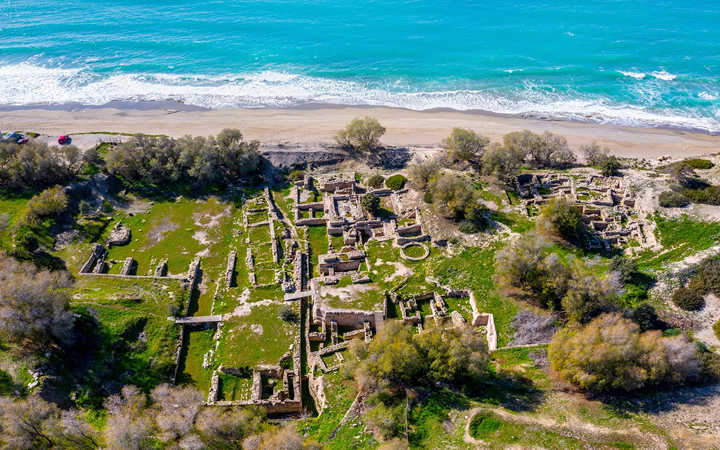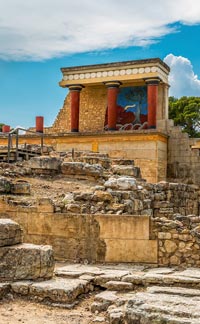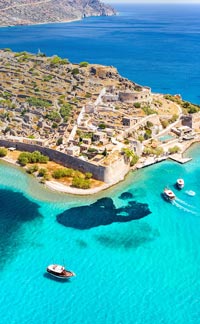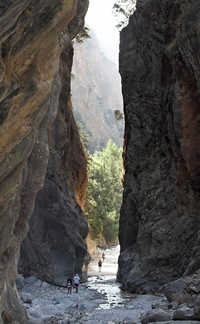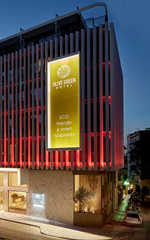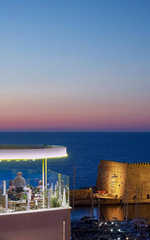Kommos, on that part of the southern coast of Crete which runs north-south at the island's approximate midpoint, was originally a stone age village, which became an important port during the Bronze Age, serving as a port for the ancient capital of Phaistos (which was 4 km from the sea) from 1650-1250 BC..
Offshore from modern Kommos Beach, a popular tourist destination, there is a sandy reef and a now-submerged shoreline which is shaped like a natural harbor. Excavation began in 1967, and the site, though visible through cyclone fencing, is not open to the public. Because of the ongoing excavations, Greek authorities have not issued hotel building permits for one of Crete's most beautiful beaches, which features kilometers of sand, and a place where the Caretta-Caretta (loggerhead) turtle lays her eggs. Visitors would have to find accomodations in nearby Pitsidia, 2 km inland or at Kalamaki Beach, 1.5 km up the coast.
Kommos continued to be a place of note up until the Roman era. Its finds have been housed in the Archeological Museum of Heraklion. Just a few meters inland from the beach, the ruins include a sanctuary complex, public buildings, Minoan houses, warehouses, a an "eliotravo," which is a factory where olives were pressed, including the slabs of rock used in olive oil extraction, and the earliest known shipyards in Crete.

